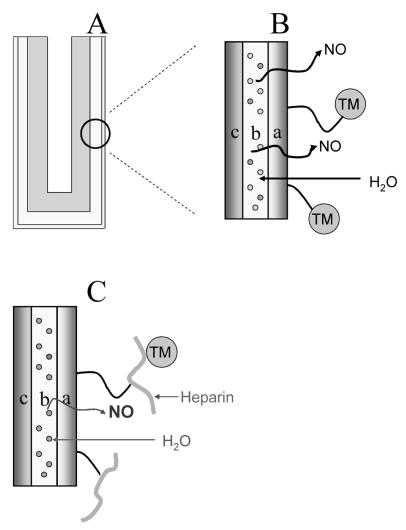Fig. 1.
A) Schematic of SR catheter sleeve (made with SR tube (OD = 1.19 mm, ID = 0.64 mm, L = 1.5 cm) sealed at one end with RTV 3140) with biomimetic bilayer coating. B) Illustration of this bilayer polymeric coating with combined NO release and surface-bound TM: a) top layer: carboxylated CarboSil with surface-bound TM; b) underlying layer: PurSil matrix doped with DBHD/N2O2 (structure shown in Fig. 2) and KTpClPB; c) SR substrate. C) Illustration of this bilayer polymeric coating with combined NO release and surface-bound heparin and TM: a) top layer: aminated CarboSil with TM attached onto the surface-bound heparin; b) underlying layer: PurSil matrix doped with DBHD/N2O2 and KTpClPB; c) SR substrate.

